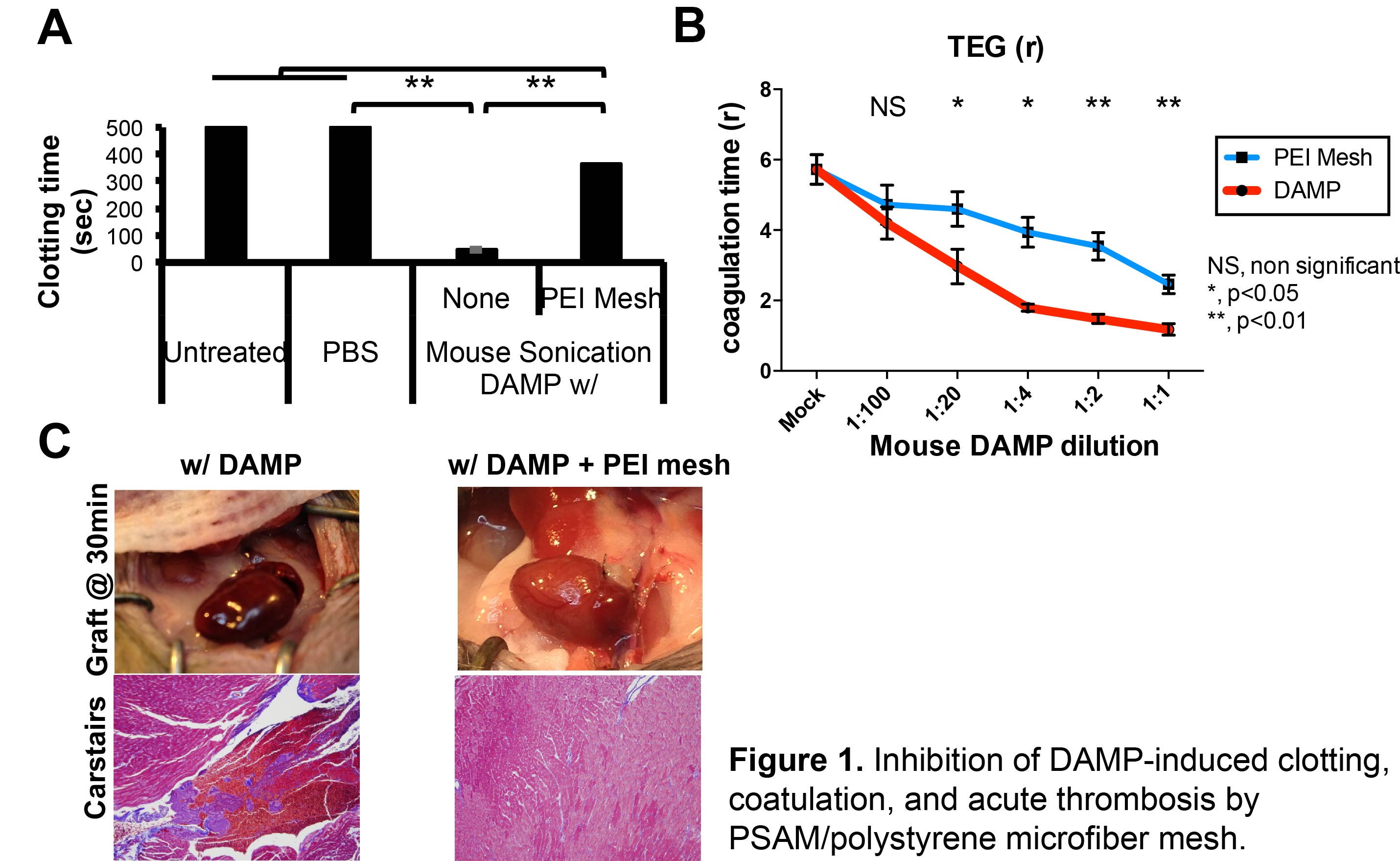Nucleic Acid Scavenging Microfiber Mesh Inhibits Trauma Induced Inflammation and Thrombosis After Organ Transplantation.
1Surgery, Duke University, Durham, NC
2Biomedical Engineering, Duke University, Durham, NC
3Surgery, Uniformed Services University of Health Sciences and Walter Reed National Military Medical Center, Bethesda, MD
Meeting: 2017 American Transplant Congress
Abstract number: 110
Keywords: Anticoagulation, Donors, Inflammation, marginal
Session Information
Session Name: Concurrent Session: Innate Immunity
Session Type: Concurrent Session
Date: Sunday, April 30, 2017
Session Time: 4:30pm-6:00pm
 Presentation Time: 4:30pm-4:42pm
Presentation Time: 4:30pm-4:42pm
Location: E350
[Introduction] Trauma patients produce a host of danger signals and high levels of damage-associated molecular patterns (DAMPs) after cellular injury and tissue damage. Organs from trauma patients often carry these DAMPs which are directly and indirectly involved in the pathogenesis of various inflammatory and thrombotic complications after transplantation. No effective therapeutic agents for the removal of DAMPs from blood or tissue fluid have been developed.
[Method] Nucleic acid-binding polymers (NABPs) were immobilized onto the eletrospun microfiber mesh. DAMPs, isolated from ex vivo killed cells (doxorubicin-induced cell death), were tested with or without pre-treatment with NABP-immobilized meshs for innate immune stimulation (TLR reporter cell lines), plasma coagulation, thromboelastography, and mouse heterotopic heart transplantation.
[Results] The Nucleic acid binding polymers, e.g., polyethylenimine (PEI) and polyamidoamine dendrimers, immobilized onto electrospun microfiber mesh can effectively capture various DAMPs, such as extracellular DNAs and high mobility group box 1 (HMGB1). Furthermore, treatment with PEI-immobilized microfiber mesh abrogated the ability of DAMPs to activate innate immune responses (TLR4 and 9 signaling) and coagulation in vitro. Finally, PEI-immobilized microfiber mesh treatment prevented DAMP-induced acceleration of clotting time, coagulation and DAMP-induced acute thrombosis after mouse heart transplantation. [Conclusion] Removing proinflammatory and pro-coagulative mediators from donor organ is an unmet need. Nucleic acid scavenging microfiber meshes can be developed as safe and effective anti-inflammatory and anti-thrombotic therapeutics for organs derived from donors with traumatic injuries.
[Conclusion] Removing proinflammatory and pro-coagulative mediators from donor organ is an unmet need. Nucleic acid scavenging microfiber meshes can be developed as safe and effective anti-inflammatory and anti-thrombotic therapeutics for organs derived from donors with traumatic injuries.
CITATION INFORMATION: Kwun J, Lee J, Jackman J, Manook M, Elster E, Kirk A, Sullenger B. Nucleic Acid Scavenging Microfiber Mesh Inhibits Trauma Induced Inflammation and Thrombosis After Organ Transplantation. Am J Transplant. 2017;17 (suppl 3).
To cite this abstract in AMA style:
Kwun J, Lee J, Jackman J, Manook M, Elster E, Kirk A, Sullenger B. Nucleic Acid Scavenging Microfiber Mesh Inhibits Trauma Induced Inflammation and Thrombosis After Organ Transplantation. [abstract]. Am J Transplant. 2017; 17 (suppl 3). https://atcmeetingabstracts.com/abstract/nucleic-acid-scavenging-microfiber-mesh-inhibits-trauma-induced-inflammation-and-thrombosis-after-organ-transplantation/. Accessed December 14, 2025.« Back to 2017 American Transplant Congress
